Dream Weavers
Märta Måås-Fjetterström creates some of the finest rugs and tapestries in the world, handwoven at the studio in Båstad, Sweden.
Dream Weavers
Märta Måås-Fjetterström creates some of the finest rugs and tapestries in the world, handwoven at the studio in Båstad, Sweden.
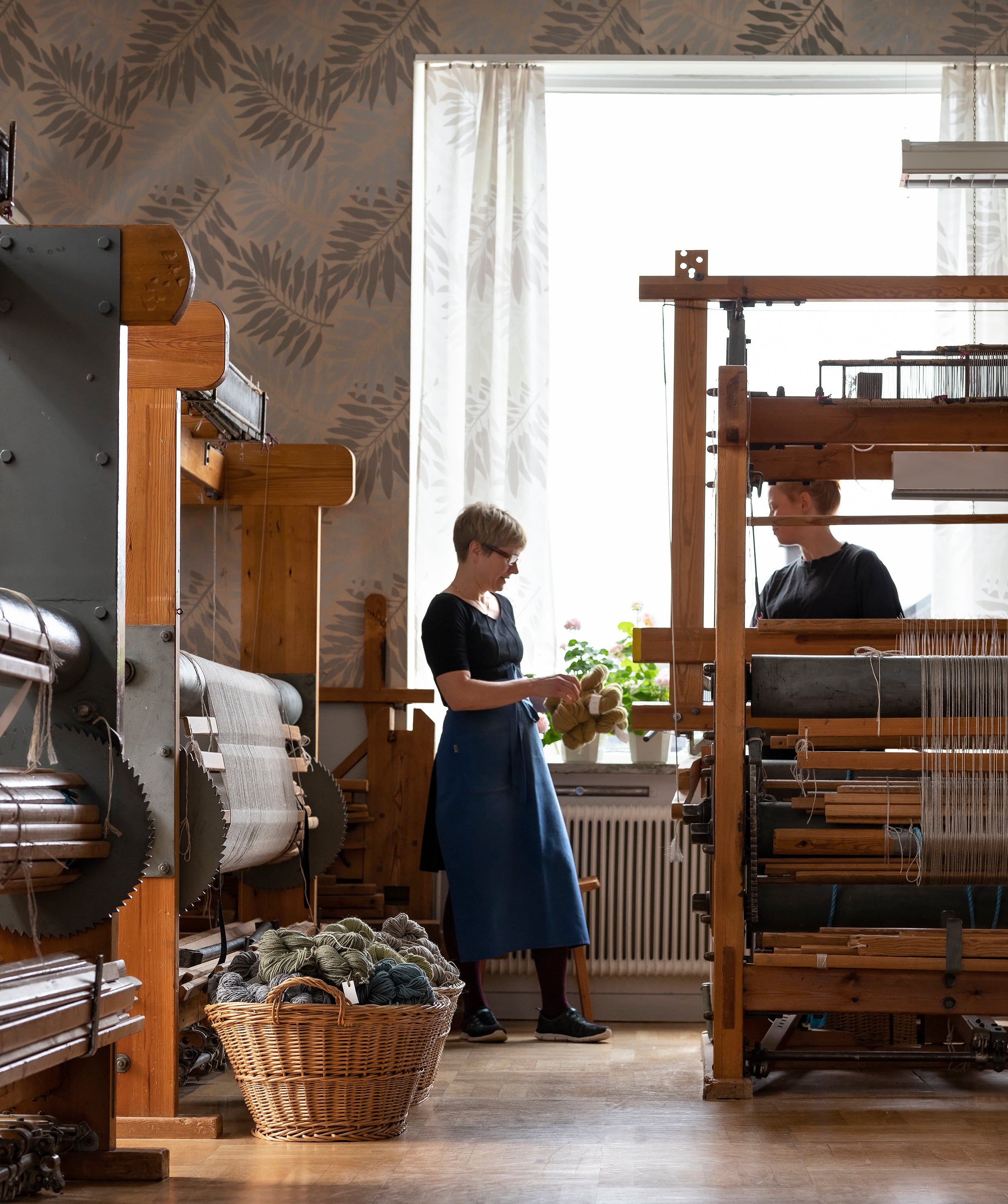
Graduates of Sweden’s leading weaving schools and trained in the tradition of the Märta Måås-Fjetterström studio, our artisan weavers are the custodians of a nearly century-long chain of knowledge.
Without art weavers, there would be no Märta Måås rugs—and without artists, no designs to interpret. The working method developed by Märta Måås-Fjetterström to bring her vision to life—combining the highest standards of craftsmanship with strong artistic expression—is truly unique.
Historically, all weavers were trained in-house. A young woman would begin as a yarn girl, advance to the apprentice room, and spend several years learning from an experienced art weaver before being entrusted with her own loom.
Today, MMF employs highly skilled art weavers with formal training in hand weaving, often complemented by an education in the arts. Sweden has a rich heritage of textile craftsmanship, and several schools offer comprehensive programmes in weaving.
At the studio, learning is an ongoing process. Colleagues with decades of experience generously share their knowledge—skills passed down directly from earlier generations of MMF weavers, forming an unbroken chain that stretches back nearly 100 years.
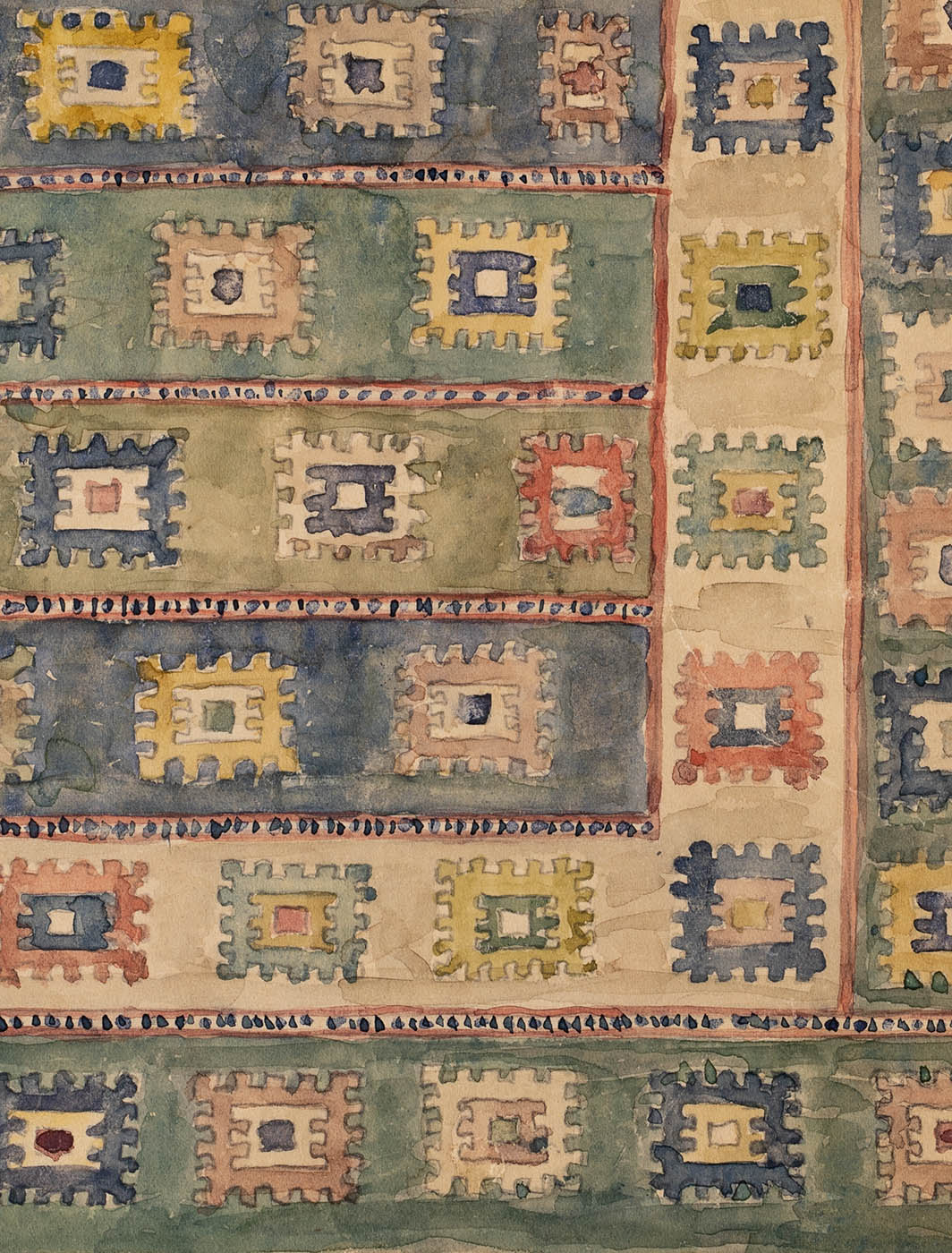
Every studio piece begins with an artist’s sketch. The Märta Måås-Fjetterström archive contains over 1,000 designs for rugs and tapestries, nearly 700 of which were created by Märta Måås-Fjetterström herself.
At the heart of every textile is a drawing. A design used in the weaving process is called a cartoon. Märta Måås-Fjetterström’s original vision, to create Swedish rugs of the highest artistic quality, remains the foundation of the studio’s work today.
Her watercolour sketches form an extensive body of work across a variety of weaving techniques. These designs are still used today and serve as the basis for the technical guides followed by our weavers.
Barbro Nilsson often created full-scale designs in watercolour, crayon or coloured pencil for her larger works, including tapestries and gobeläng flat weave rugs. Many of her compositions are built on repeating systems, allowing new patterns to emerge when several rugs are placed together. Known for her deep understanding of colour, Nilsson’s designs are often available in a wide range of colour variations.
Marianne Richter’s sketches are more playful in both form and colour. Typically created in pencil and watercolour on delicate tissue paper, her designs were mounted on cardboard and accompanied by handwritten notes to the studio. These annotations, made at the time of creation, remain important references for our weavers, especially when a rug is produced many decades later. Each composition was painted in various dimensions and often included unique technical solutions for borders and other details.
Today, the MMF pattern archive is home to a century’s worth of artistic contributions. It is continuously expanded with designs from contemporary artists, some of which are woven only once as unique art rugs.
Our classic rugs, including those by Märta Måås-Fjetterström, Barbro Nilsson and Marianne Richter, are still woven on commission, following the same artistic and technical principles established when the studio was founded in 1919.
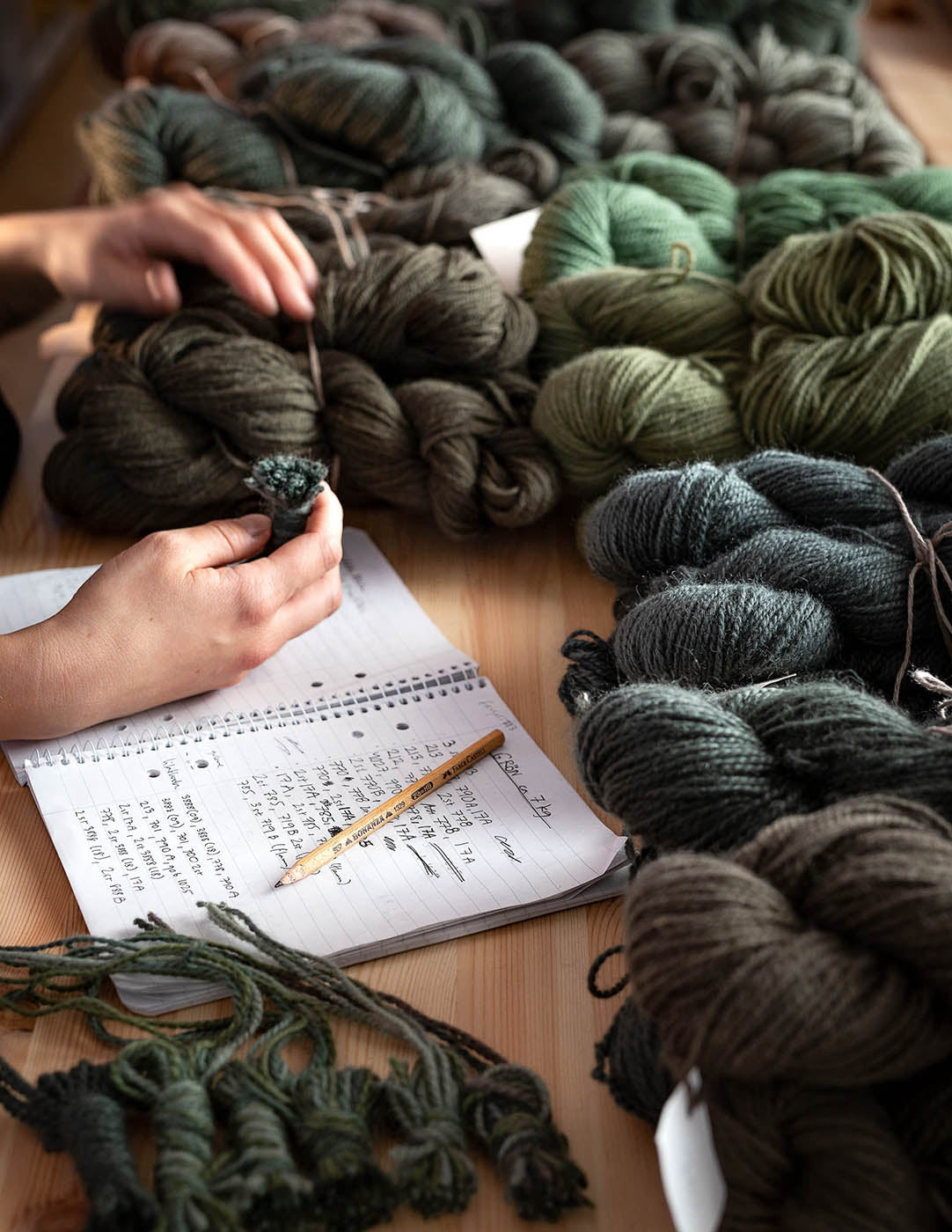
Every design created at the Märta Måås-Fjetterström studio over the past century has its own original yarn sample. These carefully preserved references specify the exact yarn qualities and colours originally selected by the artist, and they are essential tools in the weavers’ ongoing work with historical designs.
For each rug or textile, the artist-approved yarn samples have often gone through several rounds of test weaving before being finalized. When not in use, they are stored in dark, fireproof cabinets to ensure their preservation.
Although rarely discussed outside the studio, yarn samples hold a wealth of information for an experienced art weaver. They form a silent, professional language developed at the studio over nearly 100 years. This shared understanding makes it possible to reproduce a design that may not have been woven in decades—as long as there are MMF weavers who can interpret the yarn samples and understand how the artist intended the yarns to be used.
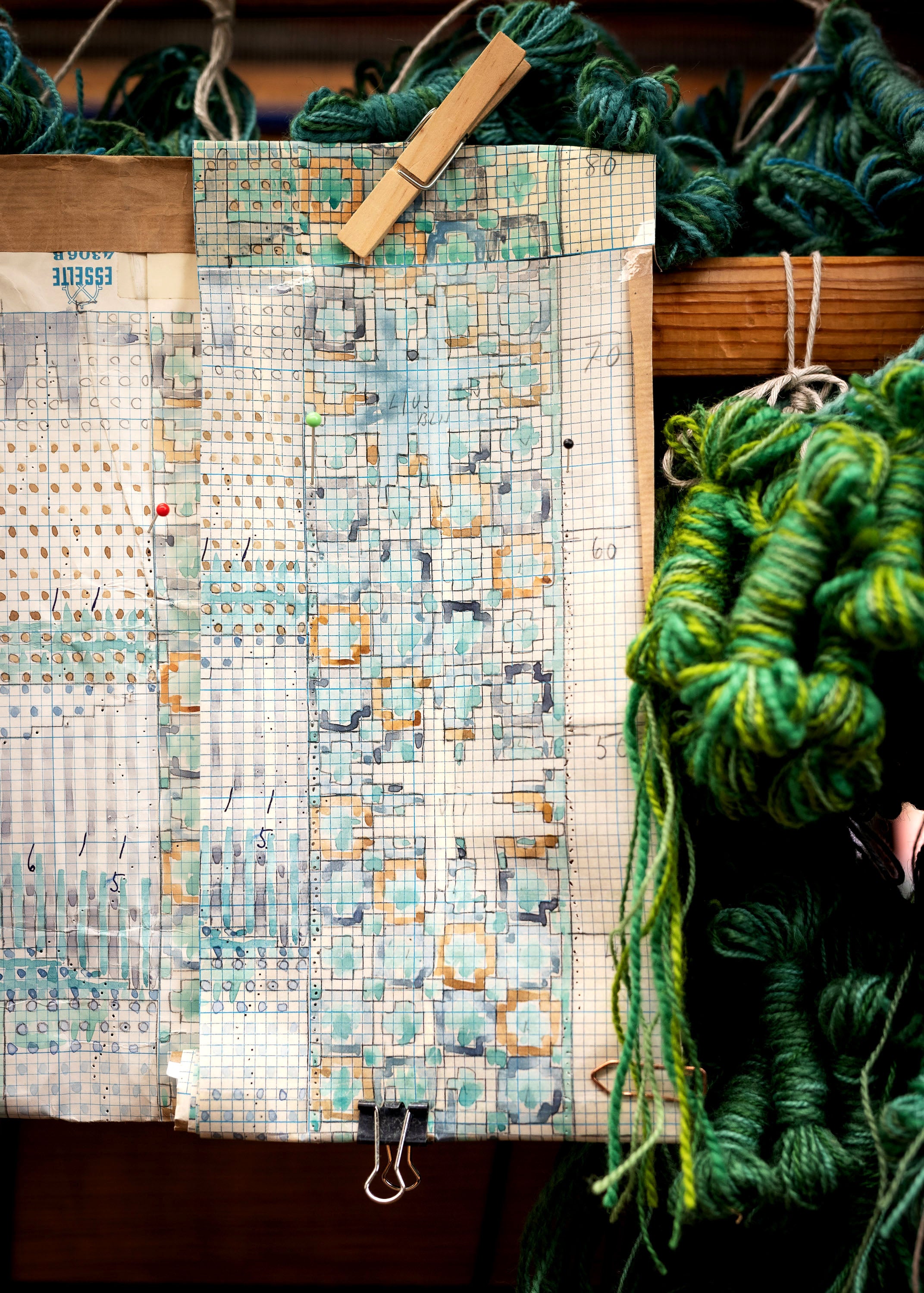
The hand-painted working drawings hold many of the details that, in the hands of skilled artisan weavers, are interpreted into textiles that fulfil the artist’s original intentions.
Painted in watercolour on squared paper, the working drawings for knotted pile, knotted rya, and rölakan flat-weave rugs specify the density of warp and weft unique to each design. These drawings are hung on the loom in front of the weaver, who uses pins to mark and track their place in the pattern.
For gobeläng (tapestry) rugs, the process requires painted contour drawings placed beneath the warp threads on the loom. The colours are then interpreted by the weaver using accompanying watercolour sketches and weaving samples.
The studio houses a large collection of patterns that can be adapted to a wide range of dimensions. In total, there are tens of thousands of working drawings—each produced and referenced when a client commissions a rug to be woven.
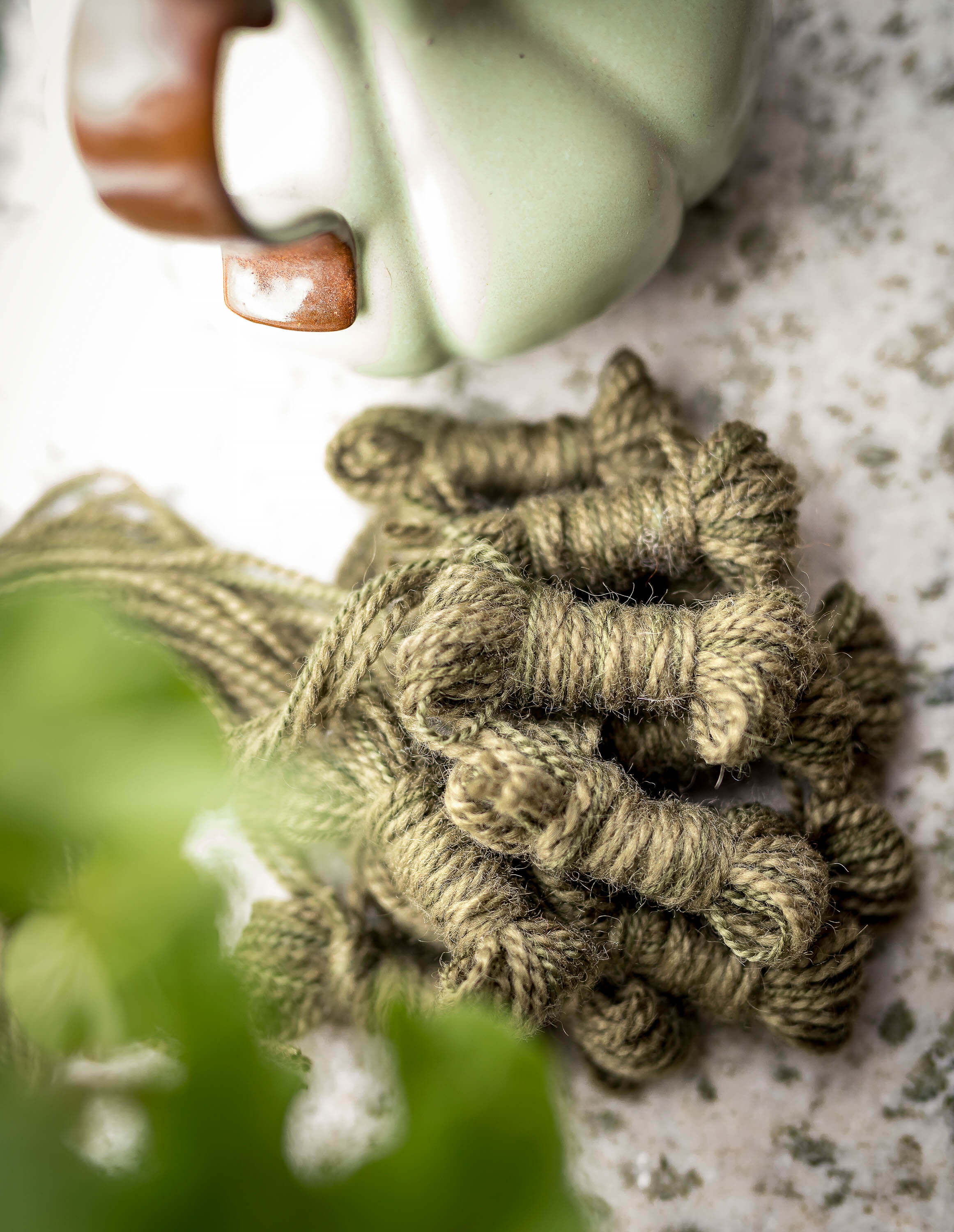
We use only the highest quality natural materials. The warp is typically made from strong, specially twisted linen, although wool is occasionally used depending on the weaving technique and the intended density of the rug. The weft consists of carefully selected sheep’s wool, spun to the specific quality and strength needed to endure use over generations.
The wool must be both durable and lustrous, yet soft and pliable. This places high demands on our yarn suppliers, who source wool from sheep breeds best suited to these requirements. Breeds that have grazed in cold climates for thousands of years have developed fleece with ideal characteristics: fine, curled underwool combined with long, shiny outer fibers. This creates the perfect texture and appearance for a woven rug.
Dyeing is done in the studio by our skilled weavers, following original recipes and yarn samples approved in close collaboration with the artists. We use acid dyes with synthetic pigments to achieve the best possible colorfastness.
Märta Måås-Fjetterström developed her distinctive palette in the 1920s at the dyeing laboratory of the Klippan Wool Factory. Her tones are rich, subdued, and closely aligned with the colors of nature. Barbro Nilsson, who had experience teaching dyeing techniques, introduced calmer, clearer hues. Marianne Richter, by contrast, often chose vivid colors like cerise, orange, ruby, emerald, and sapphire, giving her work a playful brilliance.
When collaborating with contemporary artists, we may expand our color range. Any new shades are dyed in our own laboratory by experienced weavers to ensure consistency and quality.
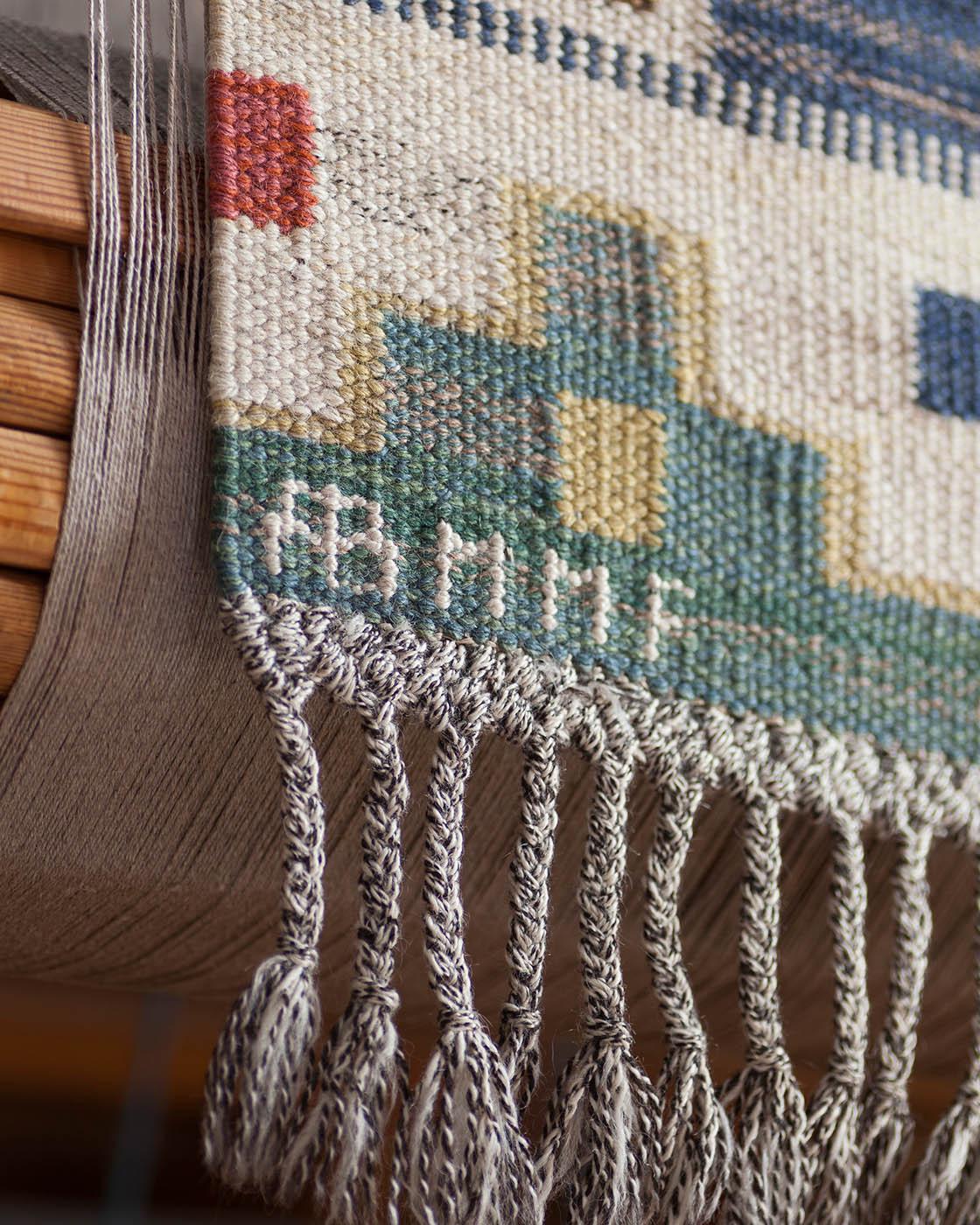
One of the simplest ways to identify a piece from the Märta Måås-Fjetterström studio is to examine its signature. These woven marks always reveal something about the rug’s origin and history.
From the very beginning, all pieces made in the studio have been signed with the initials MMF, woven into the bottom left corner. Märta Måås-Fjetterström personally designed the vast majority of the works, but in the rare case of a collaboration, the co-artist’s initials were also woven—appearing in the bottom right corner.
After Märta Måås-Fjetterström passed away in 1941, this tradition continued. Rugs created after her death are marked AB MMF in the lower left corner, with “AB” indicating that the work was made by the incorporated studio. If the design is by another artist, their initials are included in the bottom right corner.
Weavers also sign each rug. Their signatures appear as small, color-coded dots in the top right corner. The number of dots reflects how many weavers worked side by side on the rug, and each weaver has a unique color combination, which is documented in the studio archives.
Every rug produced over the past century is logged in the studio’s production records and assigned a unique identification number.